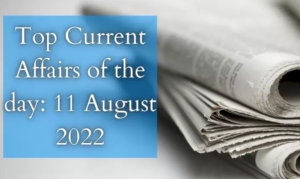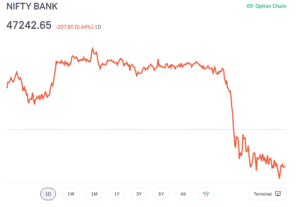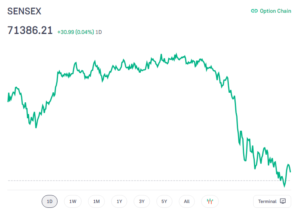
Telangana Formation Day 2022 is observed on 02nd June
Telangana, India’s 28th state, was founded on 2nd June 2014. Telangana celebrates its Formation Day to mark the people’s contribution to forming a separate state outside of Andhra Pradesh. Telangana’s 30 districts honour this day by hoisting the national flag.
The Significance of Telangana Formation Day
The formation of Telangana signifies the victory of the Telangana movement. It commemorates the official separation of Telangana from the state of Andhra Pradesh. On 2 June 2014, a 57-year-old movement came to an end, realising the hopes of the Telangana people. The movement not only provided the people of the region with a separate identity but also created a change in India’s map, which now shows the state’s boundaries.
History of Telangana Formation Day
- On 1 November 1956, Telangana merged with Andhra Pradesh to form a unified state specifically for the Telugu-speaking people by sculpting that state from erstwhile Madras. In 1969, the Telangana region witnessed a protest for a new state and in 1972, a distinct Andhra Pradesh was formed.
- Various social organisations, student unions, and government employees all played important roles in the 1969 agitation.
- After nearly 40 years of protests, the Telangana Bill was passed by the Congress Working Committee and the Bharatiya Janata Party (BJP) in the Lok Sabha in February 2014. The bill was introduced in the Indian Parliament in 2014 and the Andhra Pradesh Reorganisation Act received its approval the same year. According to the bill, Telangana will be constituted by ten districts in north-western Andhra Pradesh.
Important takeaways for all competitive exams:
- Andhra Pradesh Governor: Biswabhusan Harichandan;
- Andhra Pradesh Chief minister: Y. S. Jaganmohan Reddy.
Young women entrepreneur Rashmi Sahoo wins Times Business Award 2022
Director of Ruchi Foodline, Eastern India’s leading food brand and Odisha’s No.1 spices company, Rashmi Sahoo has been presented the Times Business Award 2022. She was given the award by renowned Bollywood actor and social activist Sonu Sood. The award was given in the category of Eastern India’s Leading READY -TO-EAT brand.
About the Rashmi Sahoo:
While working as director of Ruchi Foodline, she started and established Frozit – Odisha’s first frozen food company. She not only revolutionized the food processing segment in Odisha but also changes the lives of thousands of women by proving employment opportunities. Sahoo and Frozit have won various accolades across the world for their innovative food product line, quality and hygiene standards.
About Frozit:
Gradually Frozit has made a name of itself nationally and internationally in the category of ready to eat food and bakery and which are not only healthy but also cost-effective. Frozit now serves various food of India as well as traditional Odia foods like Biryani, Pasta, Ghee-Rice, Mutton Kasa, Laccha Paratha, Mughlai Chicken, Veg Pulao, Kadai Soyabin, Chana Masala, Friend Rice, Tandoori Mushroom, Garlic Mushroom, Zeera Rice, Mix Veg, Pada Pitha, and Kheer.
Centre Appoints S L Thaosen as Director General of Sashastra Seema Bal
A 1988-batch Indian Police Service officer S L Thaosen has been appointed as the new Director-General of the Sashastra Seema Bal (SSB). Thaosen, a Madhya Pradesh-cadre IPS officer, has been serving as the Special Director General of the Border Security Force (BSF). The Sashastra Seema Bal force guards the country’s borders with Nepal (1,751 km) and Bhutan (699 km).
The post of SSB chief has been lying vacant after incumbent DG Kumar Rajesh Chandra retired on December 31 last year. Indo-Tibetan Border Police (ITBP) DG Sanjay Arora has been holding the additional charge of the Sashastra Seema Bal DG since then.
Important takeaways for all competitive exams:
- Sashastra Seema Bal Founded: 1963;
- Sashastra Seema Bal Headquarters: New Delhi.
J&K National Panthers Party Chief Bhim Singh passes away
National Panthers Party Chief Professor, Bhim Singh passed away at his residence in Jammu after a prolonged illness. He was 80. Singh was the founder and Chief Patron of the Jammu and Kashmir National Panthers Party (JKNPP), a political organisation which seeks “ultimate revolution”, based in the Indian union territory of Jammu and Kashmir.
Mr Singh, a lawyer by profession, has been unwell for some time and was admitted to the Government Medical College, Jammu. Prof. Singh was a leader committed to secular values who fought relentlessly for the rights of downtrodden and marginalised sections of society in and outside the State legislature. At a time when polarization and divisiveness have dominated the political arena, he stood for communal harmony and fought tooth and nail against the forces, who are hell bent on dividing the people and regions into the communal lines.
Govt collects Rs 1.41 lakh crore GST in May
GST revenue for May stood at nearly Rs 1.41 lakh crore, a 44 per cent increase over the same month last year, the Finance Ministry. The Goods and Services Tax (GST) revenues came in lower than the record high collection in April at Rs 1.68 lakh crore. In March GST revenues were at Rs 1.42 lakh crore, while in February it was Rs 1.33 lakh crore.
The collection in May, which pertains to the returns for April, the first month of the financial year has always been less than that in April, which pertains to the returns for March, the closing of the financial year.
Key points:
- The gross GST revenue collected in the month of May 2022 is Rs 1,40,885 crore of which CGST is Rs 25,036 crore, SGST is Rs 32,001 crore, IGST is Rs 73,345 crore (including Rs 37469 crore collected on import of goods) and cess is Rs 10,502 crore (including Rs 931 crore collected on import of goods).
- This is the fourth time that the monthly GST collection has crossed the Rs 1.40 lakh crore mark since the inception of GST and the third straight month since March 2022.
- The total number of e-way bills generated in the month of April 2022 was 7.4 crore, which is 4 per cent lesser than the 7.7 crore e-way bills generated in the month of March 2022.
India’s economic growth expected to be 8.7% in FY22, Q4 GDP to be 4.1 %
India’s economic growth fell to 4.1 percent in January-March 2021-22, a four-quarter low, reflecting the impact of the Covid-19 pandemic’s Omicron wave on the manufacturing sector and contact-intensive services. The National Statistical Office reduced its year-on-year gross domestic product (GDP) growth forecast for the full fiscal year 2021-22 to 8.7%, down from 8.9% anticipated in February. In the years 2020-21, the economy shrank by 6.6 percent.
KEY POINTS:
- GDP growth in the fourth quarter was lower than the 5.4 percent recorded in the October-December quarter, but higher than the 2.5 percent experienced in January-March 2021.
- The GDP figure for FY22 is noteworthy since it shows growth in the year following the outbreak of the Covid-19 epidemic in 2020.
- The most recent estimate of GDP growth is lower than the second advance estimate of 8.9% (published on February 28) and the first advance estimate of 9.2%. (released in January).
- India’s GDP growth rate is expected to be 7.2 percent in 2022-23, according to the Reserve Bank of India (RBI).
- Manufacturing was the only one of the eight main sectors to contract in the January-March quarter, with a -0.2% contraction, largely due to the high base of 15.2% in the fourth quarter of 2020-21.
- In the October-December period, manufacturing increased by 0.3%. Agriculture expanded by 4.1 percent in the fourth quarter, while the mining and quarrying and construction industries grew by 6.7 percent and 2.0 percent, respectively.
- Except for trade, hotels, and transportation, all sectors of the economy exhibited stronger recovery in FY22 compared to pre-Covid levels in FY20, according to statistics he supplied.
In Q4 of FY22, private final consumption expenditure — a measure of individual consumption of goods and services – increased by 1.8% year on year. Gross fixed capital creation (GFCG) increased by 5.1 percent, which is a proxy for investment activity. Government final consumption expenditure increased by 4.8 percent in January-March, bolstering the economy.
Gross Value Added (GVA) increased by 8.1 percent in FY22, compared to a decline of 4.8 percent the previous year. In nominal terms, which account for inflation, GDP is expected to expand by 19.5%, compared to a fall of 1.4% last year.
Separately published statistics for government accounts revealed that the fiscal deficit for 2021-22 was 6.71 percent of GDP, lower than the 6.9 percent forecast by the Finance Ministry in the updated Budget Estimates. According to another statistic issued, the output of eight infrastructure sectors — coal, crude oil, natural gas, refinery products, fertiliser, steel, cement, and power — increased by 8.4% in April, compared to a 62.6 percent increase the previous month. In March, it increased by 4.9 percent.
Centre distributes Rs 86,912 crore to states and settles GST compensation debts
The Central government has handed Rs 86,912 crore to state governments, the SGST (State Goods and Services Tax), fully compensating them for the Goods and Services Tax (GST). Despite only having roughly Rs 25,000 crore in the GST compensation pool, the Centre made the whole amount. The remaining funds were paid from the Centre’s own funds while the cess was being collected.
KEY POINTS:
- Compensation of Rs 47,617 crore was due up to January, Rs 21,322 crore was due for February-March, and Rs 17,973 crore was due for April-May, out of the Rs 86,912 crore released to states.
- New Delhi is required by present laws to compensate states for any revenue lost as a result of the GST till June 30.
- Following the implementation of the GST on July 1, 2017, the government expected yearly revenue growth of 14%.
- To compensate states for lost revenue, a cess was imposed on a variety of luxury items and so-called sin goods to raise funds.
- However, a faltering economy and the COVID-19 pandemic stifled cess collections, exacerbating the gap between what was owed and the compensation fund’s available funds.
To make up for the gap in GST compensation to states, New Delhi borrowed Rs 1.59 lakh crore from the market in FY22 and Rs 1.1 lakh crore in FY21 and passed the money on to the states. The compensation cess, which will be used to support debt obligations, will be in place until 2026.
One Belt One Road: Purpose and Importance of OBOR
What is OBOR?
One Belt One Road or OBOR is an initiative of global infrastructure development strategy by the Chinese government in 2013. This initiative was also included in the constitution of China in 2017. The ‘Belt’ refers to the ‘Silk Road Economic Belt, which is a series of routes of the silk roads of the late middle ages. The ‘Road’ refers to the sea routes and the 21st-century Maritime silk road.
What is the objective of One Belt One Road?
The objectives of OBOR are creating a unified large market that makes use of both domestic and international markets, facilitates cultural exchanges and integration, and enhances mutual understanding and trust of member nations that will foster an innovative Environment with capital inflows, and talent pool, and technology database.
OBOR- Purpose and Economic Corridors
The main purpose of this initiative of One Belt One Road was to restore the silk routes which connect Asia and Europe. It involves the development of new and bigger roadway networks, railways, etc. It contains six economic corridors.
1. The New Eurasian Land Bridge- It connects Northern China to Western Russia.
2. The China-Mongolia-Russia Corridor– Connects North China to Eastern Russia via Mongolia.
3. The China-Central Asia-West Asia Corridor– Connects Western China with Turkey via Central and West Asia.
4. The China-Pakistan Corridor connects Southwestern China with Pakistan to Arabian sea routes.
5. The China-Indochina Peninsula Corridor- It connects southern China to Singapore via Indo-China.
6. The Bangladesh-China-India-Myanmar Corridor connects southern China to India via Bangladesh and Myanmar.
Importance of OBOR to China
- It aims to boost the domestic and economic growth of the country.
- The OBOR will connect the less-developed border regions of China to developed international borders which will give them an economic boost.
- It is expected that the opening of OBOR will lead to the creation of new opportunities for the Chinese market.
- It is also expected that it will enable the manufacturing powerhouse to gain control of cost-effective routes to export their materials easily.
- China has invested about $1 trillion in various infrastructure projects and many participating countries like Tajikistan, and Kyrgyzstan support OBOR due to China’s huge investment.
Amit Shah laid foundation stone for an Olympic-level sports complex in Ahmedabad
The government wants to have international level grounds and venues for all sports for the Olympics in Ahmedabad with the Sardar Patel Sports Complex, Narendra Modi Stadium, Naranpura Sports Complex, and three more sports complexes. Amit Shah, the Union Minister of Home Affairs and Cooperation, laid the foundation stone for an Olympic-level sports complex in Ahmedabad, Gujarat, on Sunday (29 May) at a cost of Rs 632 crore.
KEY POINTS:
- The world-class sports stadium is set across 18 acres in Ahmedabad’s Naranpura neighbourhood, with facilities for playing and training in a variety of indoor and outdoor activities, including swimming. It can also accommodate up to 7,000 people at once.
- This enormous sports facility with over 1.15 lakh square metres of built up area includes an indoor sports arena, a community sports arena, and an aquatic stadium.
- The BJP-led central and state administrations hope that the presence of the , the Sardar Patel Sports Complex, and the Naranpura Sports Complex will make Ahmedabad a city where Olympic preparations may be made.
Important Takeaways For All Competitive Exams:
- Union Minister of Home Affairs and Cooperation: Shri Amit Shah
PM KUSUM Yojana: Objectives, Features, Benefits and Eligibility
PM KUSUM Yojana: About
In March 2019, PM KUSUM Yojana or Pradhan Mantri Kisan Urja Surakshaevam Utthaan Mahabhiyan Yojana was launched by the government of India. Pradhan Mantri Kisan Urja Surakshaevam Utthaan Mahabhiyan Yojana supports the farmers financially to install solar irrigation pumps for cultivation. Farmers will get a 60% subsidy to set up tubewells and pump sets individually. In this article, we will highlight the objectives, features, Eligibility, and benefits of the PM KUSUM Yojana.
PM KUSUM Yojana: Objectives
1. The primary objective of PM KUSUM Yojana is to make the latest technology available to every farmer in India.
2. To make the farmers familiar with the de-dieselized irrigation system in the agricultural sector.
3. The solar pumps will enable the farmers to work more effectively and use an eco-friendly irrigation system, as solar pumps will produce safe energy.
4. The pump sets comprise an energy grid that will generate more energy than diesel-driven pumps.
5. The Farmers will be able to generate extra power and sell it to the Government directly and enhance their income.
PM KUSUM Yojana: Features
1. Component A– Install a total of 10GV grid connections, stilt-mounted decentralized solar plants, and other renewable energy-based power plants. Each plant is sized up to 500KW to 2MV.
2. Component B– Install stand-alone solar pumps of up to 7.5HP individual capacity and worth 17.50 lakh.
3. Component C– Provide financial support to Solaris 10 lakh grid-connected agricultural pumps of 7.5HP of capacity each.
PM KUSUM Yojana: Eligibility
The eligibility list for PM KUSUM Yojana is given below-
1. An individual Farmer
2. A group of Farmers
3. FPO or Farmer producer organization
4. Panchayat
5. Co-operatives
6. Water User Associations.
PM KUSUM Yojana: Benefits
1. The construction of solar plants which is initiated by the government of India will generate an aggregate of 28.250 MV of power.
2. The government of India will financially support the farmers to execute this scheme all over India. The government will provide a 60% subsidy and 30% loan on the total cost of solar pumps or tubewells.
3. Government of India will also provide subsidies to install state-of-the-art solar pumps. It holds a capacity of 720 MV which is expected to improve irrigation.
4. The solar plants will be set up on uncultivated land and the landholders can get a stable income by utilizing the lands.
5. The solar plants will be set up above a minimum height so that the farmers can continue cultivating after the installation of the plants.
6. It will increase the production of renewable energy and will maintain eco-friendly cultivation.
FAQs on PM KUSUM Yojana:
1.What is PM KUSUM Yojana?
Ans. The PM KUSUM Yojana was launched in March 2019. It aims to promote solar energy and by 2022, it aims to produce solar energy and other renewable energy with a capacity of 25,750 MV.
2. When was PM KUSUM Yojana launched?
Ans. PM KUSUM Yojana was launched in March 2019, by the Ministry of New and Renewable Energy.
Mens Hockey Asia Cup: India win bronze with 1-0 win over Japan
India defeated Japan 1-0 to win bronze at the Men’s Hockey Asia Cup 2022 in Jakarta, Indonesia. Japan had seven penalty corners while India had just two but India led the circle penetration stats 11-10. India were down to 10 men in the last minute of the match but they managed to hold on and win their second bronze medal at the Asia Cup.
This was India’s 10th medal from the 11 editions of the continental meet held so far. India, champions in 2003, 2007 and 2017, have finished runners-up on five occasions and have won the bronze medal twice. Against Japan, Rajkumar Pal (6’) scored the solitary goal of the match. Indian captain Birendra Lakra was declared man of the match in the bronze medal playoff.
In the finals of Asia Cup 2022:
South Korea dashed Malaysia’s hopes of a maiden Hero Asia Cup trophy as they reigned supreme with a thrilling 2-1 final victory here at the GBK Sports Arena. This is the fifth time the Korean side have lifted the prestigious trophy. They have won the title in 1994, 1999, 2009 and 2013.
Senior IPS Zulfiquar Hasan Becomes the New DG of BCAS
Senior IPS officer, Zulfiquar Hasan has been appointed as the new Director-General of the Bureau of Civil Aviation Security (BCAS). The official order stated that Zulfiquar Hasan has been appointed “for a tenure up to his superannuation on 31.10.2024”. West Bengal-cadre 1988-batch IPS officer, Zulfiquar Hasan has been serving as the Special Director General of the Central Reserve Police Force (CRPF) in Delhi. The post of the Director-General, BCAS has been vacant since January 4 after incumbent Nasir Kamal opted for voluntary retirement.
An order issued by the Centre, following the sanction by the Appointments Committee of Cabinet (ACC), appointed the 1988-batch Indian Police Service (IPS) officer to the post of Director-General of the Bureau of Civil Aviation Security, which has been vacant since the beginning of the year. The Bureau of Civil Aviation Security functions under the Union civil aviation ministry and is tasked with framing security-related protocols for aviation operations.
Important takeaways for all competitive exams:
- Bureau of Civil Aviation Security Founded: January 1978.
VAT:Full-Form, Introduction, Explanation and History
Full-Form of VAT is ‘Value Added Tax’. Value-added tax (VAT) is an indirect tax paid on goods and services for value added at every point of the production or distribution cycle, from raw materials through final retail purchase. On April 1, 2005, the Value Added Tax (VAT) was implemented. The amount of value addition at each stage is first determined, and then a tax is levied on it. In the end, the final consumer must pay the full VAT when purchasing items; customers at earlier stages of production are reimbursed for the tax they have already paid. VAT is a consumption tax because the whole tax burden is borne by the consumer.
Important points about VAT:
- At every step in the supply chain where value is added to a product, value-added tax, or VAT, is applied.
- VAT proponents argue that they increase government revenue without hurting the wealthy by raising their income tax rates. VATs, according to critics, impose an excessive economic burden on low-income taxpayers.
- Although VAT is used in many developed countries, it is not used in the United States.
- VAT is calculated on the basis of consumption rather than income. Unlike a progressive income tax, which imposes higher taxes on the wealthy, VAT is applied uniformly to all purchases.
- A VAT system is used in over 160 countries. The European Union (EU) is the most common place to find it. It is not, however, without debate.
State-by-state VAT rules: For proper implementation and levying, each state has its own VAT legislation. According to their implied laws, several states impose different VAT rates.
Why was VAT enacted?
The fundamental goal of introducing VAT was to prevent double taxation and the cascade impact that existed in the previous sales tax structure. When a product is taxed at every stage of the sale, this is known as a cascading effect. Because the tax is imposed on a value that includes tax paid by the previous buyer, the consumer ends up paying tax on tax that has already been paid.
The VAT system does not allow for any exemptions. Taxing at each level of the manufacturing process guarantees better compliance and fewer exploitable loopholes.
VAT’s Disadvantages
VAT has various drawbacks as well. It was intended to eliminate the cascading effect of taxes, but it has not been successful. Input tax credit (ITC) on services is not available under VAT. It is one of the most complicated taxation systems due to the various VAT rates and legislation in each state.
Has GST completely replaced VAT?
In July 2017, the union government adopted the Goods and Services Tax (GST) to totally abolish the cascading impact of taxes and simplify the indirect tax structure. Despite the fact that GST replaced VAT on most commodities, some items are still not covered by the new system. The tax levied on such items is still VAT.
History of VAT:
- VAT was mostly conceived in Europe. Although the notion of charging each stage of the production process was first discussed a century earlier in Germany, it was established by French tax administrator Maurice Lauré in 1954.
- A VAT system is used by the vast majority of industrialised countries that make up the Organisation for Economic Co-operation and Development (OECD). The United States continues to be an outlier.
- According to one analysis by the International Monetary Fund (IMF), any country that transitions to VAT initially suffers from lower tax receipts.
- In the long run, however, the analysis found that VAT adoption has enhanced government revenue and been effective in the vast majority of cases.
In some regions of the world, VAT has a negative connotation, which has harmed proponents politically. Sen. Ralph Recto, a leading proponent of VAT in the Philippines in the early 2000s, was thrown out of office by the electorate when he stood for reelection. However, in the years following its installation, the general public came to embrace the tax. Recto eventually made his way back to the Senate, where he advocated for a higher VAT.
FAQs:
Ques. What is the difference between and VAT?
Ans. Unlike VAT, GST allows the tax paid on supplies to be deducted from the output tax due on services supplied. The adoption of GST on goods and services has proven to be more efficient in many respects due to the key distinction between GST and VAT.
Ques. What is GST and VAT?
Ans. Indirect taxes, such as value added tax (VAT) or goods and services tax (GST), are consumption taxes levied on any value added to a commodity.
Ques. Is there any VAT after GST?
Ans. From July 1, 2017, the Goods and Services Tax (GST) has replaced the Central and State indirect taxes such as VAT, excise duty, and service tax.
Ques. What is the example of VAT that how it works?
Ans. VAT (Value Added Tax) = Output Tax – Input Tax
A trader, for example, acquires products worth Rs 100 and pays a 10% VAT (Rs 10) on them. You then pay Rs 150 to the dealer for the products, and the merchant deducts 10% VAT (Rs 15) from your payment. The production tax is 15 rupees, and the input tax is ten rupees.
Ques. Who introduced GST in India?
Ans. The GST is not a new concept in India. On the proposal of the Report of the Indirect Taxation Enquiry Committee, 1978, value added tax (VAT) was established in 2005.
Sachin Tendulkar to continue as UNICEF’s Goodwill Ambassador for 20th year
Sachin Tendulkar will continue as United Nations Children’s Fund (UNICEF) ‘Goodwill Ambassador’ for a record 20th year, working for the welfare of underprivileged children. The iconic cricketer has been associated with UNICEF for a long for various causes. In his almost two-decade-long partnership with UNICEF, he has been vital in furthering the campaigns, especially the ones aimed at providing a better future for underprivileged children.
Key points:
- In 2003, he was chosen to take lead in the initiative to create awareness and promote polio prevention in India.
- Later in 2008, he was roped in to create and promote hygiene and sanitation among communities and has been continuing to do so over the years.
- In 2013, he was appointed UNICEF Ambassador for South Asia to advocate good hygiene and sanitation across the region.
- In 2019, he went on a three-day trip to Nepal to raise awareness for UNICEF Nepal’s ‘Bat for Brain Development’ campaign.
Important takeaways for all competitive exams:
- UNICEF Headquarters: New York, New York, United States;
- UNICEF Head: Catherine M. Russell;
- UNICEF President: Tore Hattrem;
- UNICEF Founded: 11 December 1946.
US Frontier Overtakes Japan’s Fugaku As World’s Most Powerful Supercomputer
According to the 59th edition of the Top500 list of the world’s most powerful supercomputers unveiled by Germany, ORNL’s Supercomputer Frontier from the US, a supercomputer built using Hewlett Packard Enterprise (HPE) architecture and equipped with Advanced Micro Devices (AMD) processors, outperformed Japan’s Supercomputer Fugaku to become the world’s fastest supercomputer.
Frontier’s nearest competitor, Fugaku, has a performance score of 442 petaflops on the Linpack benchmark, a standard for officially ranking global, publicly disclosed supercomputers. While Fugaku was based on Arm’s core designs, US’s Frontier is powered by AMD.
The supercomputer: Frontier
- The supercomputer – Frontier, which was built for the US Department of Energy’s Oak Ridge National Laboratory (ORNL), has broken the exascale speed barrier with a Linmark benchmark score of 1.1 exaflops, making it the world’s first supercomputer to do so. Whereas, 1 exaflop is equivalent to 1,000 petaflops.
- Frontier features a total of 8,730,112 cores and is designed on the newest HPE Cray EX235a architecture with AMD EPYC 64C 2GHz processors.
- Frontier is also ranked number one as the world’s most energy-efficient supercomputer, on the Green500 list.
President Inaugurates the Akhil Bhartiya Ayurved Mahasammelan’s 59th Maha Adhiveshan
Shri Ram Nath Kovind, India’s President, today inaugurated the 59th Maha Adhiveshan of the Akhil Bhartiya Ayurved Mahasammelan in Ujjain, Madhya Pradesh. Ayurveda means Science of Life in Sanskrit. The term ‘pathy’ is used to describe a variety of medical systems around the world. It refers to the method of treating an illness once it has manifested. However, in Ayurveda, disease prevention is prioritised alongside healing.
KEY POINTS:
- The Indian government has taken many measures to protect and promote Indian medical systems from time to time.
- This initiative, however, has received even more impetus after the formation of a separate Ministry of AYUSH in 2014. Various Research Councils affiliated with the Government of India have accomplished remarkable things in the field of Ayurveda.
- Our health is influenced by our nutrition, lifestyle, and even our everyday routine. Ayurveda explains what our daily routine should be, what our seasonal routine should be, and what our diet should be before taking medicine.
- Mahaadhiveshan, the topic of “Ayurveda Diet – The Foundation of a Healthy India” will be covered.








